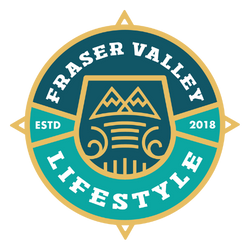Everyone suffers the age old problem of “I wish I knew that before I started.” Injuries and bitter experiences are often the issue for beginners all the way to athletes. We can beat some common mistakes by remembering some simple tips. Knowing is half the battle, the other half will be guess work. Knowing a few tips that are more or less universal, will keep you in the game, whatever game that is.
This is no hard and fast formula, but you will at least be able to have a reasonable angle to attack your training regimen. You will find that these tips are like a potent spice; a little means a lot.
ABC’s
- Active recovery
- Breathing with the contraction
- Calm face
Active Recovery
You may or may not have heard of this concept/buzzword but it’s quite simple. Active recovery is when you keep your body moving on days that you are not training your body. One example would be to play a sport when you’re not pumping iron. Some people call these days, “Rest days.” But there’s a pitfall in that nomenclature. Most trainers and athletes on the cutting edge of performance know to keep their body working. Athletes will always work, even lightly in order to not let the body lose mobility and stability. Avoiding muscle tightness is a key factor in a solid training program.
Maybe you don’t even know what “recovery” is. Put simply, “Recovery” is a form of recalibration. This recalibration is for your muscles, joints, tendons and nervous system. In order to recover effectively, there are basics like foam rolling your muscles.

Massage and stretching are also among the usual gambit of strategies to get your body feeling right. Hopefully we have shed light on the subject. That being said Active recovery is the most fun or engaging way to re-calibrate but can not stand on its own. Recovery of the typical sort, can’t be ignored. You must stretch, and heaven forbid, relax.
Recovery is Re-calibration
Breathing
You remember how to do that, right? Nope, you don’t, because if you’re just starting out, you need to understand that your body works with the breath in a web of ways. Firstly, you need to breathe with the diaphragm first. How, you might ask? Lay on your back and put your hands on your belly. Your hands and belly should be rising and falling. That’s your diaphragm working. These muscles are part of your core (or trunk). The core is the connection point for your upper body to the lower body, and then the ground. Using the breath with the diaphragm is the beginning of connecting to your muscles. The mind is the real master of course.

Everytime you exercise a muscle you must connect the mind to the muscle and the conduit is the breath. So for example, if your doing a simple bicep curl, breath into the diaphragm and flex the abdominals into the spine. You have now started the link to the bicep. Then you can work up the chain from there. Next is then realizing the muscles you need to use. In the example, were talking about the bicep. You want to THINK about the biceps as you’re contracting or flexing them. This small thing will pay big dividends in the long run.
Breathe, contract, think.
Calm your face
Once you get into heavier weights, this concept is going to be much more elusive. It may not be too late though. If you’re just starting, then this tip will illustrate the concept of energy leaks. But back to calming your face.
You have 43 muscles in your face and they have a tremendous amount of power. Chewing or biting for instance is a good demonstration of that power.
If you relax your face, you broaden your connection to the movement
This power requires a lot of energy and is where energy likes to go when you’re exerting yourself physically. It ends up being wasted by the face and you get to unimpress everyone in the gym.

Calm your face, look like a boss and redirect that energy. If you relax your face, you broaden your connection to the movement you’re performing. That being said, the face isn’t likely the worst culprit of energy leaks. Relaxing the face is an easy way to remain calm within your lifts and stay connected to your body.
Spend some time and try to understand these ABC’s as a beginner or if you’re a novice, attack your training from a different angle. Hopefully you garnered something from these tips. There is a lot of information out there that can easily overwhelm you but it’s important to keep it simple, experiment and have fun.


